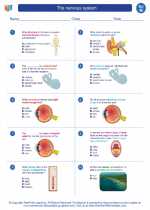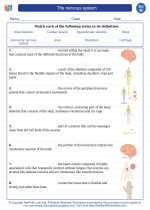Tissue Repair
Tissue repair is the process by which the body replaces and restores damaged or dead cells and tissues.
Types of Tissue Repair
There are two main types of tissue repair:
- Regeneration: In this process, damaged tissues are replaced by the same type of cells that were originally there. This type of repair occurs in tissues with high regenerative capacity, such as skin and liver.
- Scar Formation: In tissues with limited regenerative capacity, such as the heart and nervous system, the damaged tissue is replaced by a fibrous scar. This type of repair is also known as fibrosis.
Steps of Tissue Repair
The process of tissue repair involves several steps:
- Inflammation: When tissue is injured, the body initiates an inflammatory response to remove damaged cells and debris and to prepare the site for repair.
- Proliferation: During this phase, new cells are generated to replace the damaged ones. This involves cell division and migration of cells to the site of injury.
- Remodeling: In this final phase, the new cells and tissues mature and reorganize to restore the structure and function of the injured tissue. This may involve the formation of scar tissue.
Factors Affecting Tissue Repair
Several factors can influence the process of tissue repair:
- Age: Younger individuals tend to have better regenerative capacity compared to older individuals.
- Nutrition: Adequate nutrition, especially protein and vitamins, is essential for proper tissue repair.
- Blood Supply: Good blood circulation is important for delivering nutrients and oxygen to the site of injury.
- Health Conditions: Chronic diseases and certain medications can impair the body's ability to repair tissues.
Study Guide
To understand tissue repair, it's important to focus on the following key points:
- Understand the difference between regeneration and scar formation in tissue repair.
- Learn the steps involved in the process of tissue repair, including inflammation, proliferation, and remodeling.
- Identify the factors that can influence tissue repair, such as age, nutrition, blood supply, and health conditions.
◂Science Worksheets and Study Guides Eighth Grade. The nervous system
Study Guide The nervous system
The nervous system  Worksheet/Answer key
Worksheet/Answer key The nervous system
The nervous system  Worksheet/Answer key
Worksheet/Answer key The nervous system
The nervous system  Worksheet/Answer key
Worksheet/Answer key The nervous system
The nervous system  Vocabulary/Answer key
Vocabulary/Answer key The nervous system
The nervous system  Vocabulary/Answer key
Vocabulary/Answer key The nervous system
The nervous system  Vocabulary/Answer key
Vocabulary/Answer key The nervous system
The nervous system  Vocabulary/Answer key
Vocabulary/Answer key The nervous system
The nervous system  Vocabulary/Answer key
Vocabulary/Answer key The nervous system
The nervous system  Vocabulary/Answer key
Vocabulary/Answer key The nervous system
The nervous system 

 Worksheet/Answer key
Worksheet/Answer key
 Worksheet/Answer key
Worksheet/Answer key
 Worksheet/Answer key
Worksheet/Answer key
 Vocabulary/Answer key
Vocabulary/Answer key
 Vocabulary/Answer key
Vocabulary/Answer key
 Vocabulary/Answer key
Vocabulary/Answer key
 Vocabulary/Answer key
Vocabulary/Answer key
 Vocabulary/Answer key
Vocabulary/Answer key
 Vocabulary/Answer key
Vocabulary/Answer key
